Since the 80s, Fadi Dorninger has been a familiar figure to Linzers interested in culture; he operates across all sectors and anticipates where trends are heading. We had the extraordinary pleasure of talking to Fadi about his prize, the upcoming concert, his artistic thinking, an extinct culture in the USA and the apathy of modernity. The concert on December 1 will be broadcast on Ars Electronica Home Delivery (powered by LINZ AG), the program and its actors are remarkable:
DRKMBNT: Wolfgang Dorninger (self soldered sound generators)
JOSEF K. NOYCE: Peter Androsch (guitar), Geza Eisserer (percussions and keyboard), Wolfgang Dorninger (vocals)
DORNINGER – “Apatheia” from the trilogy “Disappearance – Perspective – Utopia”: Wolfgang Dorninger (electronics, visuals), Nadja Schütz (vocals)
DORNINGER – “Die Romantische Remixed”: Wolfgang Dorninger (Electronics), Didi Bruckmayr (Realtime-3D, Visuals)
WIPEOUT: Didi Bruckmayr (vocals, visuals), Wolfgang Dorninger (electronics)
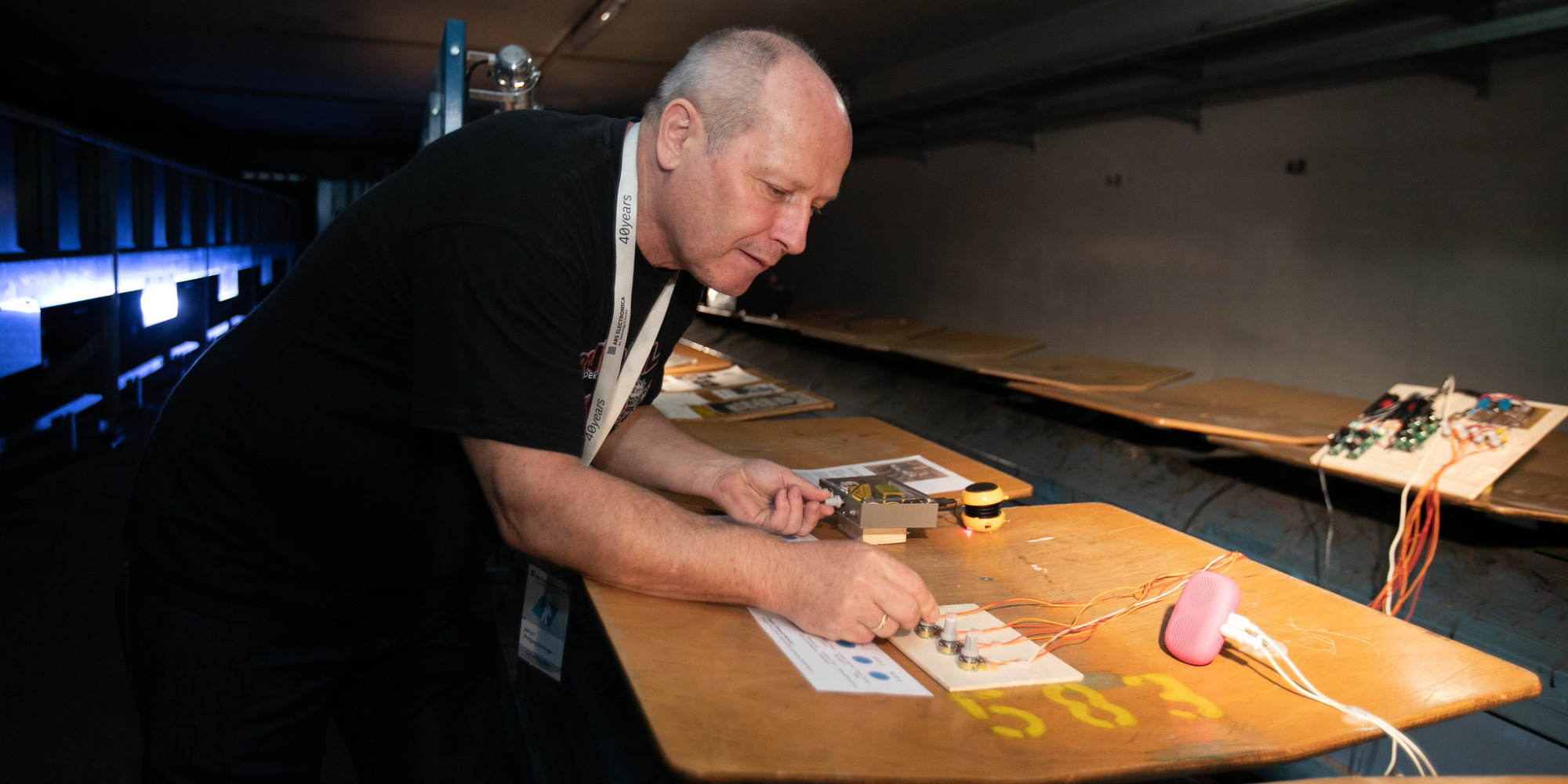
Congratulations, you have received the art appreciation award of the city of Linz! How does it feel?
Wolfgang Fadi Dorninger: Surprised and joyful. I never expected to receive an award because I often sit between the chairs – in the theater they think of me as an artist, in the art field as a musician, and in the music field many people like what I do, but others also find me dubious because I work for “high culture”. This year I was lucky that the jury knows my artistic work and motivation very well. For the exhibition “Cassette Culture Node.Linz“, for example, I opened and closed the exhibition every day for three weeks. I lived and communicated the Cassette Culture motto “Contact, Document and Exchange” on site. At Ars Electronica 2015 in the Gleishalle, I not only incorporated the acoustic quality of the huge place to live into the score, but also acoustically designed a future city, gave the name PostCity an acoustic future as a place (“Post City – An Aural Fiction“). The jury could see the closed work and not the supposedly extensive one.
I do not see the award for my life’s work, but as recognition and motivation to continue. I also see it as my task to “set the young people on fire”. (laughs) I only have good experience with young people, especially in the lectures – they are really in good spirits, interested, organized. I would only wish that there was more courage to breaks.
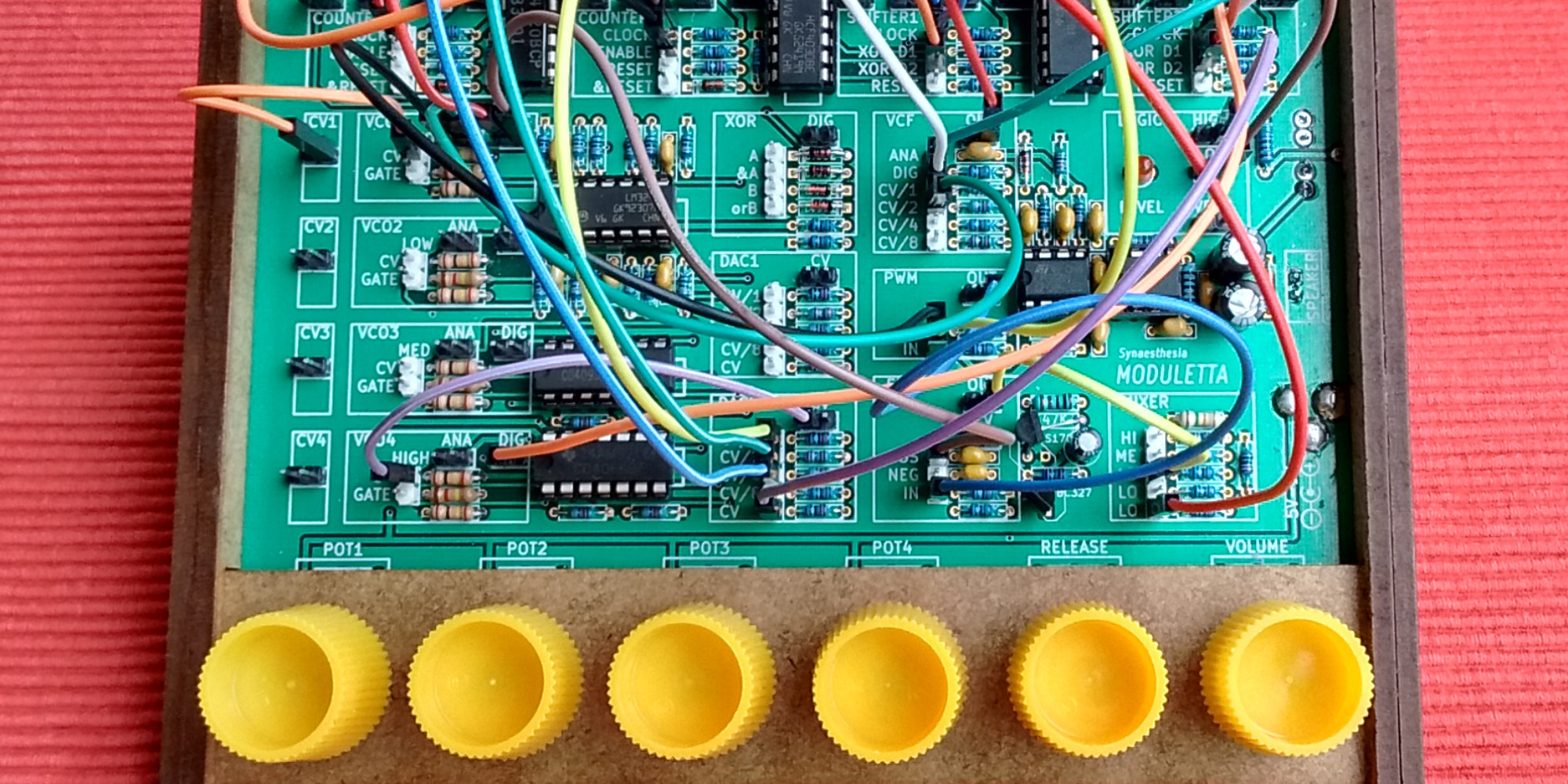
How did you get into music?
Wolfgang Fadi Dorninger: My musical background is in pop. As a child I sang from the paper in a choir and grew up with classical music. It wasn’t until I was 14 that I came across Jimi Hendrix, which opened up a whole new world for me. But I first had to free myself from the strict guidelines of classical music and find my own direction. I liked punk politically and humanly, but aesthetically less. My modified cassette recorders with self-soldered reverb units and distortion were probably more what was later called industrial. My way of making music only really took off later, after a concert by Kraftwerk and when I got to know the playful hybrids of pop and avant-garde like The Residents and Snakefinger. That’s when I realized that I also wanted to make music with this airiness.
My own musical preferences are very broad: Sixties Psychodelic, Industrial, Classic, a certain kind of Jazz, black astral culture like Jimi Hendrix, Sly Stone, Sun Ra or Love. So I have a really broadly based œuvre and that makes it much more difficult to win prizes.
Instead of a physical awards ceremony, you’ll be performing on Tuesday at the Ars Electronica Center’s Deep Space 8K, which will be broadcast on Home Delivery. How did you approach this event?
Wolfgang Fadi Dorninger: I want to entertain and inspire the audience on a high level with dedication. It is not only about me, the artist, but about the dialogue I can have with people. And if they stay and are well “filled” at the end, then I have made a good performance.
When Gerfried Stocker asked me whether I wanted to play in Deep Space – because there is no award ceremony for the Art Appreciation Prize – it was clear to me that I had to put together a set that would have to do with the entire period of my work. I tried to think of content where the time stamp of the old pieces is not so noticeable. Where a piece from the 80’s still has carrying power, I would implement it in the same way today. I chose “The Rape of Lucrece” by Josef K. Noyce (1989) and “Apatheia” (2001), a piece from my trilogy “Disappearance – Perspective – Utopia”.
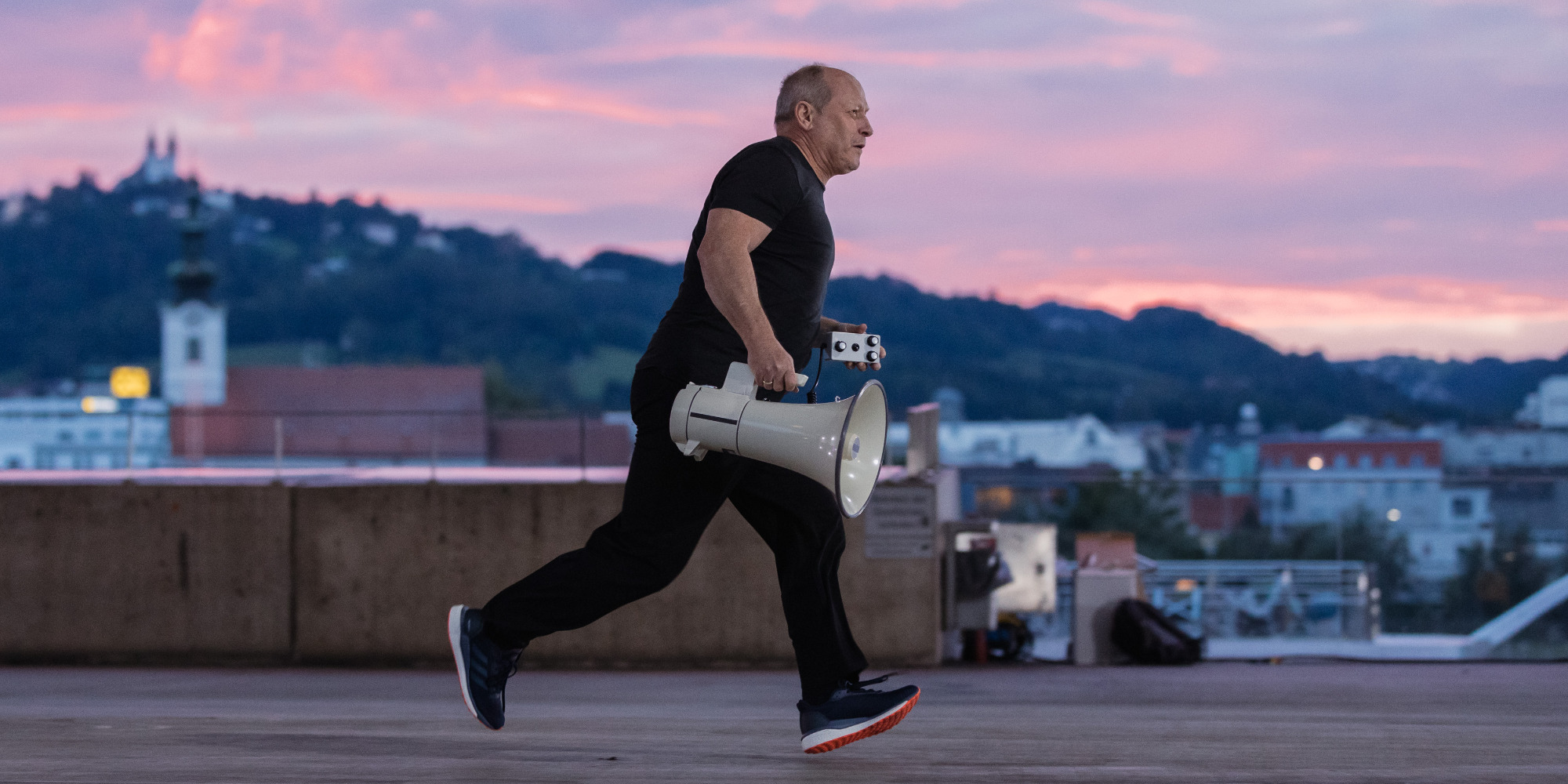
In the video of Apatheia it says “We are informed, but we do not feel anything anymore”. That may be from 2001, but it sounds quite up-to-date…
Wolfgang Fadi Dorninger: Exactly. We live in a time in which we receive an immense amount of information but perceive very little. Thanks to the algorithms of search engines, people always find what they want to find and because they find it in such a large quantity, it becomes their reality. And suddenly there are people who believe that a microchip is implanted in them with a vaccination. This information would not be found like this in a library.
But not only search engines, traditional media also cause apathy by repeating some things in a loop. If you want people to lose their humanity, then you regularly show them pictures of inhumanity. Because at some point they don’t want to see that anymore, have nothing to do with it and shut themselves off. They become inhuman because they can no longer cope. It was different with the famous photo of a civilian being executed by a shot in the head during the Vietnam War, which as a cover picture in Time Magazine actually ended the Vietnam War. People were shocked by the brutality shown, which they had never seen before and therefore they could feel empathy. And so the piece “Apatheia” came into this set.
The video for “Apatheia” on dorf tv.
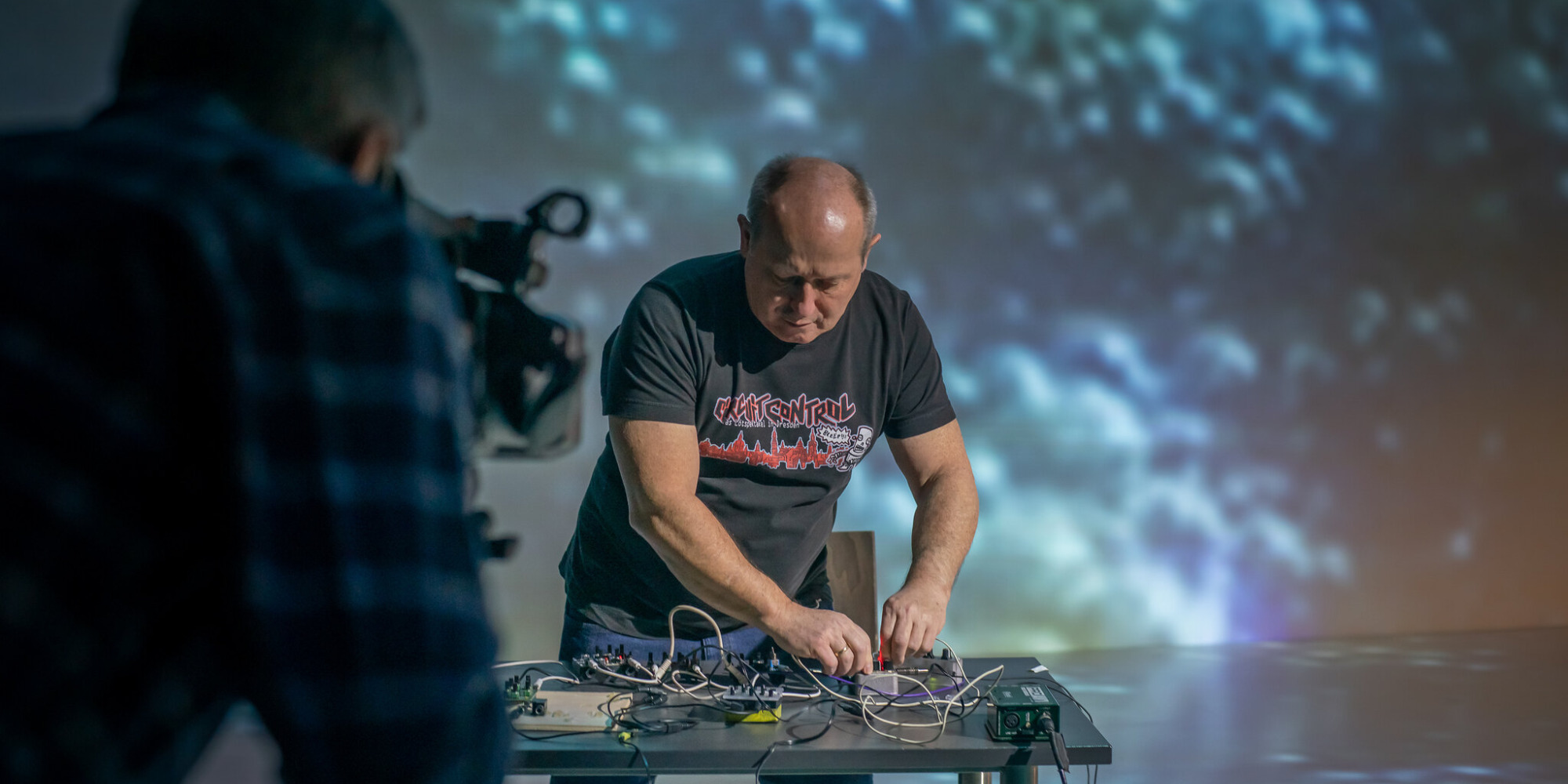
For me, art and culture require a story, a plot in which I can immerse myself and in which I can live. How is that for you? What interests you? How do you create a work, a piece, a set?
Wolfgang Fadi Dorninger: In 2001 I started a trilogy, which I finished in 2009: Disappearance – perspective – utopia. For each part of the trilogy I needed an emotional anchor to create a story for me.
The first anchor and the reason for the name “Hisatsinom, about disappearance” was a stay in the USA, where I accidentally came across the culture of Hisatsinom (Anasazi). This high culture had an enormous astronomical knowledge and a cosmological world view. Their buildings were not only dwellings and places of worship, but also star and sun charts with which they determined the time of sowing and harvesting. But in the 14th century this culture disappeared within a few generations, conjuring up many myths, from a great, long famine, to predatory, carnivorous hordes from Mexico, to stargates. And this was my anchor point for the theme of disappearance.
In 2005 the mystery was solved: The monsoon shifted – probably due to a volcanic eruption or something similar – two months backwards, drastically reducing yields and breaking the belief in the omniscience of the upper caste. And so an advanced civilization disappeared and was replaced by another, down-to-earth “religion”, Kachinism. This was the first part of the trilogy.
The second part in 2005 had the perspective on the theme and the anchor was the Nasca Lines in Peru. The exciting thing about these lines is that the Nasca, the builders, could not see them in all their density. The number of lines and trapezoids is enormous. I find it poetic and beautiful that there are only countless speculations to this day as to what they were made for by this techno-savvy farming society. Surveyors are still puzzling how they were able to create lines 10 kilometers long so straight.
The video for “Nasca, on Perspective” on dorf tv.
The third part of 2009 was dedicated to the non-place and there was my anchorage Shangri-La. I planned an expedition to Tibet to visit the possible location of Shambala (Shangri-La). The riots in Tibet during the Olympics in Beijing did not allow this. So I decided to follow in the footsteps of Michael Peissel for a chora through the Kingdom of Mustang. There I met some of the 2,300 spirits of the Tibetans, a huge non-place where there is a spirit for everything.
The video for “Shangri-La” on dorf tv.
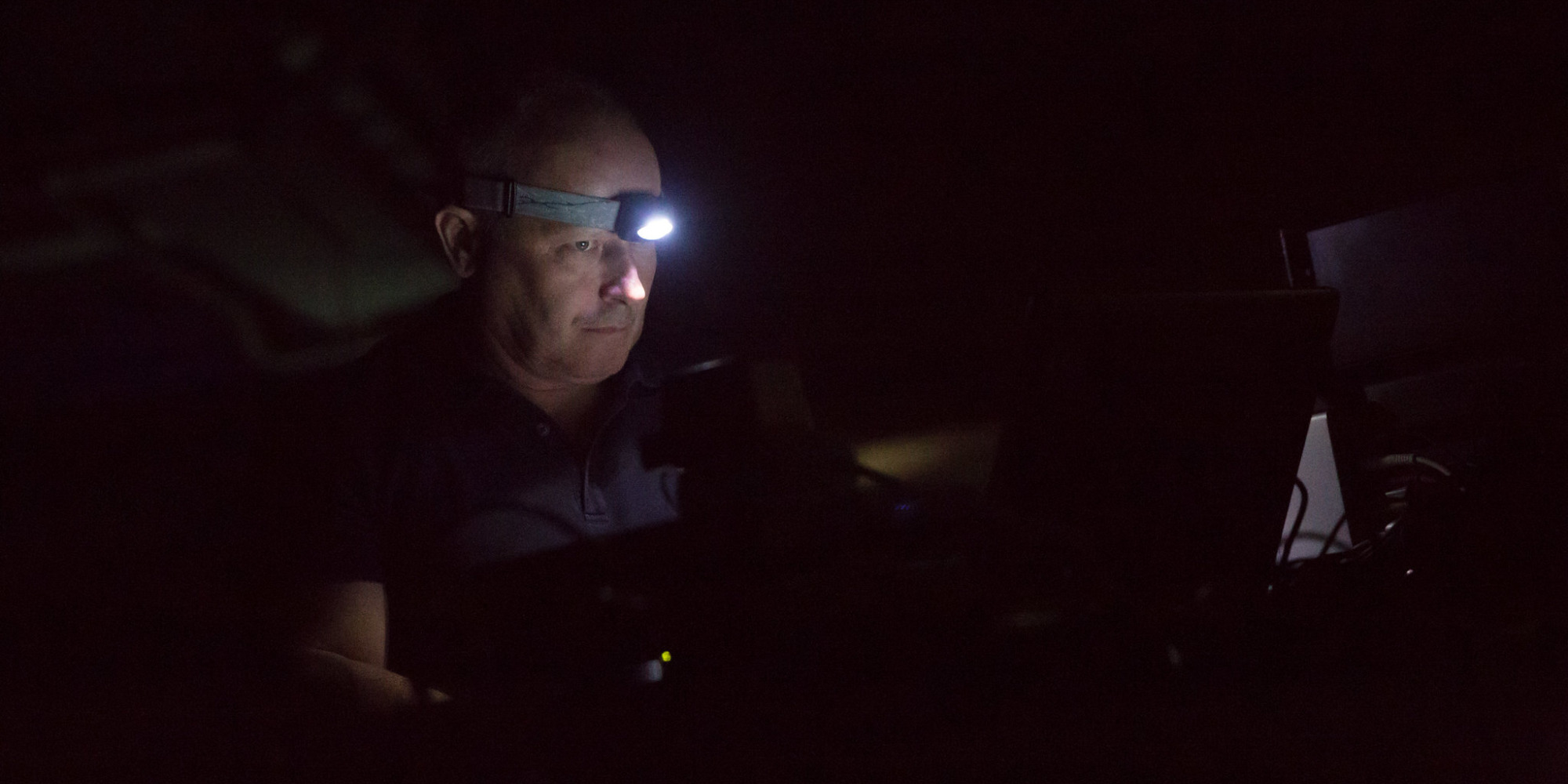
During the reception of your works and texts I asked myself how you approach your themes. Is the interest spiritual? Cultural? And how does it continue then?
Wolfgang Fadi Dorninger: More like a scientist, like a seeker. And coincidence is always involved.
Let me tell you briefly how I came to the trilogy, for example. In a lecture at the Angewandte, we were supposed to write down three topics on which we wanted to do projects in the next 20 years. I wrote down “disappearance”, “perspective” and “non-place”. By chance, I came across the Hisatsinom culture during my stay in the USA in 1999. I became totally immersed in its history and the research drew larger and larger circles until I began “under power” with the script, the composition and the video.
I was already afraid that I wouldn’t find a hook for the “perspective” and the “non-place”, which I talked about with a friend and his family when I was visiting Denver. At breakfast the next day, his mother suddenly showed me photos of the Nasca lines she had taken herself flying over them in the late 50s. From then on it was clear that this wonderful woman gave me the hanger for “perspective”. And one year later I was in Nasca and flew over the lines myself.
So my approach to a topic is always a mixture of coincidence, curiosity and theories that I pursue.
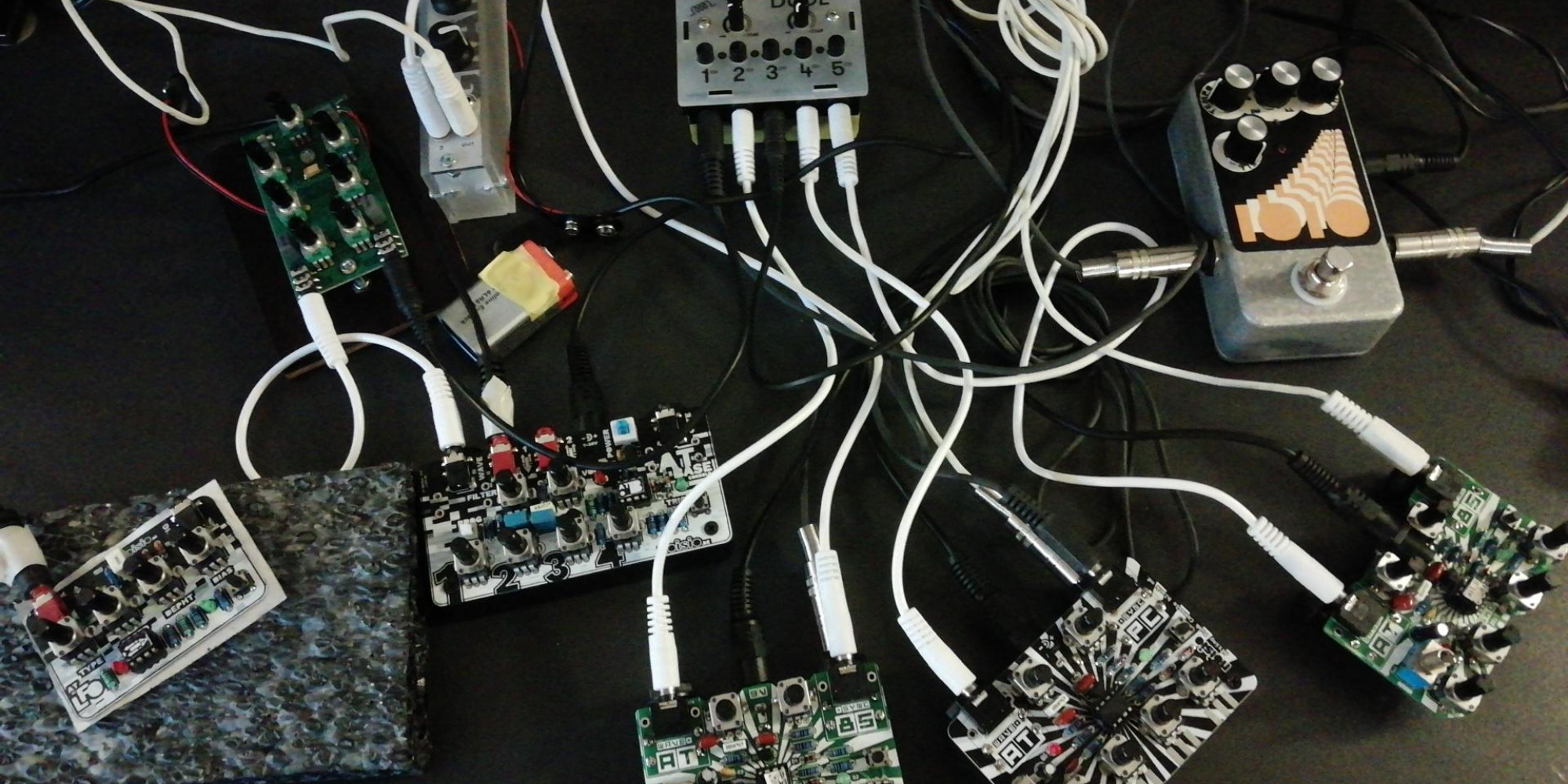
Another work that will be presented is DRKMBNT. What does that mean?
Wolfgang Fadi Dorninger: Dark Ambient. The abbreviation comes from the fact that I did not want to give too much importance to “dark” or “ambient”. A music project based on self soldered sound generators and effects.
Is it more fun if you made and soldered it yourself?
Wolfgang Fadi Dorninger: Yeah, have fun. The self-soldering already creates its own artistic dynamics. And I can also repair it myself. But what I like most is that friends of mine have developed these tools, with whom I very often solder together. I love soldering in groups, it inspires me.
The video for drkmbnt on dorf tv.
The most important question at the end: Have you been to Kapu for Nirvana in ’89?
Wolfgang Fadi Dorninger: Yes! I was there and I can say with certainty that not everyone who says so was there. (laughs) They were on tour together with TAD and had to learn that always the band that was headlining got the special attention. And so they took turns so that everyone could be the star at times. In the Kapu in Linz TAD were the headliners, in the U4 in Vienna they were Nirvana. Both were good, but you could already see the potential in singing and songwriting of Nirvana.
A few days later I was in Vienna and met a friend who immediately said: “Have you seen Nirvana? They are going to be big!”
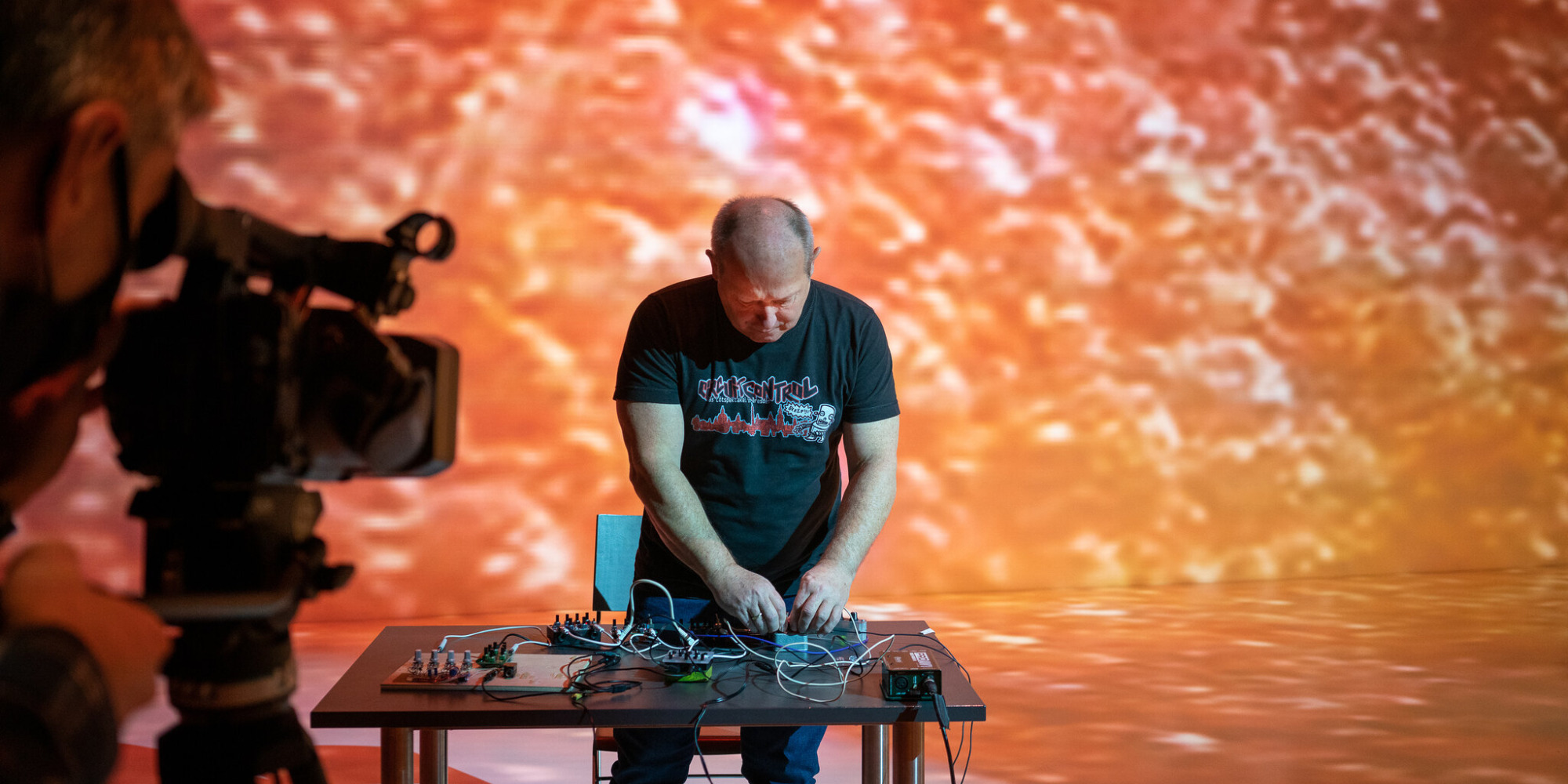
Wolfgang Fadi Dorninger started his musical career in 1983 with band projects like ROI (Rythmic of Industry), Der Hammerschmied or Monochrome Bleu. In 1983 he founded the tape label Die Ind. With Monochrome Bleu he toured half of Europe and three times across the USA. The first tour in 1986 changed his artistic and cultural compass forever. Back in Linz, Dorninger started local (Fadi Sampler Linz) and international (Tape Report) music networks based on the principles of cassette culture. He propagated free radio, published in fanzines and founded community labels such as 7inch12 or the music database SR-Archiv of Austrian popular music. In art, Dorninger is mostly active in public spaces, working there with ephemeral media or using the sound of these spaces as an instrument. As a musician and composer he is active in theater and film, in bands and in sound art. DIY, open source and open structures are the driving force and constant renewal in his artistic work. Dorninger teaches sound production and sound design at the University of Art in Linz. (Photo: Max Bauer)
Well, are you curious? We are looking forward to seeing you in the next weeks at “Ars Electronic Home Delivery” powered by LINZ AG! Let yourself be inspired by the many ideas for the future, listen to the great piano concerts, tinker with the music, discuss with us and most of all, please feel free to ask us questions, post your suggestions and ideas and let us know what kind of future you have in mind!
